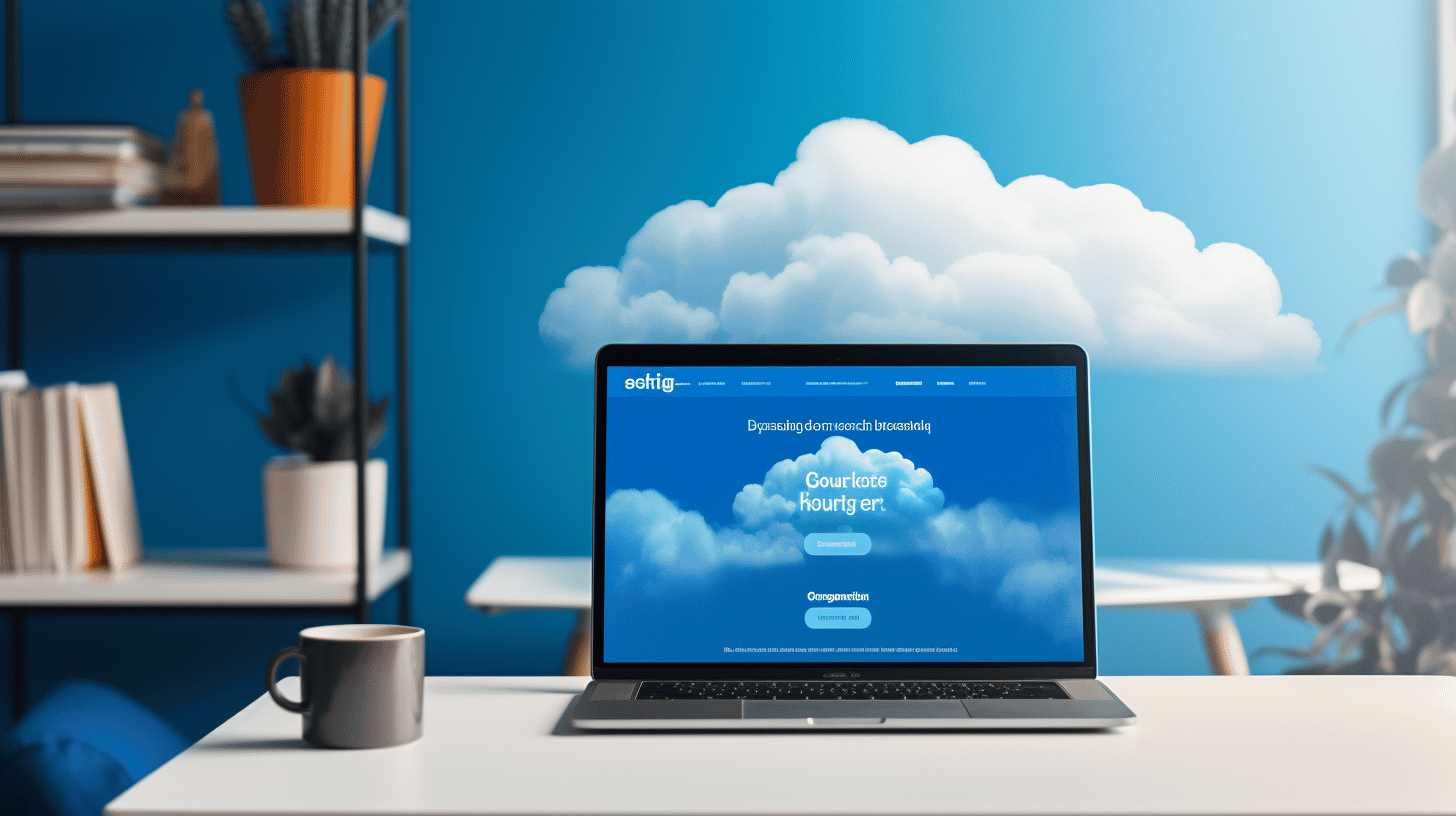In today’s digital landscape, online security is of paramount importance for any website owner. With the increasing prevalence of cyber attacks and data breaches, it is crucial to take proactive measures to protect your WordPress website. By implementing effective online security measures, you can safeguard your website, user data, and reputation from potential threats.
So, what exactly is online security, and why is it essential for your WordPress site? Online security refers to the steps and precautions taken to protect digital assets, such as websites, from unauthorized access, data breaches, malware infections, and other cyber threats. With the rise in cybercriminal activities, websites are increasingly becoming targets for hackers seeking to exploit vulnerabilities and gain unauthorized access.
WordPress, being the most popular content management system (CMS) in the world, is not immune to such threats. As a WordPress website owner, it is your responsibility to ensure the security of your site and the sensitive data it contains. This article delves into the world of WordPress website security, providing valuable insights on vulnerabilities, current security trends, major threats, and best practices to enhance your website’s security posture.
But first, let’s take a look at some alarming statistics that highlight the need to prioritize online security for your WordPress website:
Understanding WordPress Vulnerabilities
WordPress is one of the most popular content management systems, powering millions of websites around the world. While it offers a host of benefits, it’s important to understand that no platform is immune to vulnerabilities. In this section, we will delve into some key aspects of WordPress vulnerabilities, to help you gain a deeper understanding of the risks involved.
Disclosed Vulnerabilities in 2023
In 2023, a staggering number of 4,833 vulnerabilities were disclosed in the WordPress ecosystem[1]. These vulnerabilities range from minor coding errors to more significant security loopholes. It is crucial to stay up-to-date on these vulnerabilities and take necessary actions to protect your WordPress website.
Security Bugs Reported
Notably, there were 4,528 confirmed security bugs reported in the year 2023[2]. These bugs could potentially compromise the security of your website, making it vulnerable to attacks. To ensure the safety of your WordPress site, it’s essential to address these bugs promptly and implement appropriate security measures.
Number of Hacked WordPress Sites
An alarming statistic reveals that approximately 4.3% of WordPress sites were estimated to be hacked in 2023[3]. This highlights the importance of proactively safeguarding your website against cyber threats and staying vigilant about potential vulnerabilities.
Average Files Cleaned During Malware Removal
In 2023, on average, each malware removal request involved the cleaning of approximately 610 files[4]. This emphasizes the widespread impact of malware attacks and the potential damage they can cause to your WordPress site. It is crucial to regularly scan your website for malware and promptly eliminate any suspicious files to prevent further harm.
To gain a comprehensive understanding of WordPress security and learn how to protect your website against cyber threats, check out the Understanding WordPress security guide. It provides valuable insights and practical tips to enhance the security of your WordPress site and shield it from potential vulnerabilities.
Remember, by being proactive and staying informed about WordPress vulnerabilities, you can significantly reduce the risks associated with running a WordPress website. Stay safe and secure in the ever-evolving digital landscape!
[1] In 2023, 4,833 vulnerabilities were disclosed in the WordPress ecosystem.
[2] A total of 4,528 confirmed security bugs were reported in 2023.
[3] Approximately 4.3% of WordPress sites were estimated to be hacked in 2023.
[4] On average, 610 files were cleaned during each malware removal request in 2023.
Current State of WordPress Security
In the ever-evolving landscape of cybersecurity, it is crucial to stay informed about the current state of WordPress security. With millions of websites running on the WordPress platform, it has become a prime target for malicious actors seeking to exploit vulnerabilities. Let’s take a closer look at some key aspects of the current state of WordPress security:
Unpatched Vulnerabilities 🛡️
One concerning aspect of WordPress security is the presence of unpatched vulnerabilities. These vulnerabilities are essentially weaknesses in the code that hackers can exploit to gain unauthorized access or carry out malicious activities. By mid-2023, around 26% of disclosed vulnerabilities were deemed unpatched1. This means that despite their identification, a significant number of vulnerabilities remain unfixed, making WordPress websites more susceptible to attacks.
Incidence of Broken Access Control 🔒
Security issues related to broken access control represent another significant concern for WordPress site owners. Broken access control refers to the failure of access controls, which should restrict users’ unauthorized actions. In WordPress, this can manifest in different forms, such as improper configuration of user roles and permissions. According to reports, broken access control accounted for 12.9% of the total reported vulnerabilities in WordPress2. This emphasizes the importance of properly managing user access to safeguard websites from potential threats.
Frequency of Attacks on WordPress Sites ⚔️
The sheer number of attacks launched on WordPress sites is staggering. It is estimated that approximately 90,000 attacks per minute specifically target WordPress websites3. These attacks range from brute force login attempts to more sophisticated exploits targeting vulnerabilities. This statistic serves as a reminder of the relentless nature of cyber threats and highlights the importance of implementing robust security measures to protect WordPress sites.
Daily Incidence of WordPress Site Hacking 🚫
Perhaps one of the most alarming statistics is the daily incidence of WordPress site hacking. It is estimated that approximately 13,000 WordPress sites are hacked every day4. This means that thousands of website owners wake up to find their sites compromised or defaced, resulting in potential data breaches, loss of revenue, and damaged reputation. This alarming figure underscores the urgent need for diligent security practices and proactive measures to safeguard WordPress sites from attacks.
In light of these statistics, it is evident that maintaining a secure WordPress website is of utmost importance. By staying informed about the latest vulnerabilities, implementing regular security updates, fortifying access controls, and adopting robust security plugins, website owners can mitigate the risks and protect their online presence from the ever-evolving threat landscape.
References:
Major WordPress Vulnerabilities
WordPress is undoubtedly one of the most popular content management systems (CMS) out there. Its flexibility, ease of use, and extensive plugin ecosystem have contributed to its widespread adoption among website owners. However, like any software, WordPress is not impervious to vulnerabilities. In this section, we will explore some of the major vulnerabilities that could potentially compromise WordPress websites.
Vulnerabilities Due to Outdated Plugins
One of the primary contributors to WordPress vulnerabilities is outdated plugins. These plugins, which add functionality and features to WordPress websites, are developed by various third-party developers. While most plugin developers strive to keep their plugins secure and up to date, occasionally, vulnerabilities may be discovered that require immediate attention.
According to the latest statistics, outdated plugins account for a staggering 52% of known vulnerabilities in WordPress. This highlights the importance of regularly updating plugins on your WordPress website. By staying up to date with plugin releases and applying necessary updates promptly, you can significantly reduce the risk of exploitation through known vulnerabilities.
Vulnerabilities in the WordPress Core
While WordPress itself is generally considered to be a secure CMS, vulnerabilities do arise in its core code. The WordPress core team works tirelessly to identify and patch any security vulnerabilities promptly. In fact, in 2022, only 23 vulnerabilities were reported in the WordPress core, which is a testament to the team’s dedication to maintaining a secure platform.
However, it’s crucial to remember that attacks on websites often exploit not only the core vulnerabilities but also vulnerabilities in plugins, themes, or weak user credentials. That’s why taking a comprehensive approach to website security is essential. Keeping your WordPress core up to date, using trusted themes and plugins, and implementing strong user access controls are key steps to safeguarding your website.
Balada Injector Malware Compromises
In September 2023, a significant security incident occurred, affecting thousands of WordPress websites. The Balada Injector malware, a sophisticated threat, managed to compromise over 17,000 websites in that month alone. This incident serves as a reminder of the evolving threat landscape and the need for proactive security measures.
The Balada Injector malware targeted vulnerable WordPress installations, exploiting known vulnerabilities in plugins and themes. Once infiltrated, the malware injected malicious code, allowing attackers to gain unauthorized access and potentially carry out further malicious activities.
To protect your WordPress website from such malware attacks, it’s crucial to stay informed about the latest security threats and proactively implement security measures. Regularly update your themes and plugins, use strong, unique passwords, and consider employing a comprehensive security solution to detect and mitigate potential threats.
🔍Additional Information
- Outdated plugins were the main contributors to vulnerabilities, accounting for 52% of known issues in WordPress.
- Only 23 vulnerabilities were reported in the WordPress core in 2022, indicating a drastic increase in security concerns in 2023.
- In September 2023 alone, more than 17,000 WordPress websites were compromised through the Balada Injector malware.
For more information on specific vulnerabilities and ways to mitigate them, you can refer to the WordPress Vulnerability Database.
Security Enhancements and Practices
In today’s digital landscape, ensuring the security of your website is paramount. With cyber threats becoming increasingly sophisticated, it’s crucial to implement robust security enhancements and practices to protect your WordPress site. Let’s explore some effective measures you can take to safeguard your valuable online presence.
Two-Factor Authentication (2FA)
One of the most powerful security measures you can implement is Two-Factor Authentication (2FA). This additional layer of security adds an extra step to the login process, making it significantly more challenging for unauthorized individuals to gain access to your website. By requiring users to provide a second form of verification, such as a unique code sent to their mobile device, 2FA adds an essential layer of protection. In fact, a recent survey revealed that 70% of respondents have already adopted 2FA to secure their WordPress sites[1].
Protection Tools: Wordfence and Sucuri
Another crucial aspect of maintaining a secure WordPress site is investing in reliable protection tools. Two popular options in this regard are Wordfence and Sucuri. Both tools offer comprehensive security features that actively monitor your website for any suspicious activity, effectively mitigating potential threats. Here’s a quick overview of their capabilities:
- Wordfence: This powerful security plugin acts as a web application firewall, actively blocking malicious traffic, and defending against various types of attacks. In fact, Wordfence protected over 1.5 million sites by blocking more than 3 million attacks in the first half of 2023[2].
- Sucuri: With its robust malware scanning capabilities, Sucuri ensures that your website remains free from any infected files or malicious code. Additionally, it offers advanced DDoS protection, preventing your site from going offline in the face of a massive influx of traffic.
Implementing these security plugins can go a long way in keeping your WordPress site safe and secure.
WPScan’s Identification of Plugin and Theme Vulnerabilities
As of May 2023, the popular vulnerability scanner WPScan identified over 100,000 plugin vulnerabilities and 25,000 theme vulnerabilities in WordPress[3]. This staggering number highlights the importance of staying vigilant and keeping your plugins and themes up to date. Software vulnerabilities can serve as entry points for hackers, making it crucial to regularly update your WordPress site with the latest security patches and fixes.
By adopting these security enhancements and practices, you can significantly reduce the risk of your WordPress site falling victim to cyberattacks. Remember, protecting your online presence is an ongoing effort that requires proactive measures and staying up to date with the latest security best practices.
Essential WordPress Security Tips
Conclusion
In conclusion, ensuring the security of your WordPress website is crucial to protect your data, reputation, and user privacy. With the increasing number of cyber threats and vulnerabilities, taking proactive steps to strengthen your website’s security is more important than ever.
By understanding the common vulnerabilities in WordPress and staying updated on the latest security patches, you can significantly reduce the risk of your website being compromised. Implementing measures such as two-factor authentication, using reliable protection tools like Wordfence and Sucuri, and regularly scanning for plugin and theme vulnerabilities with WPScan can further enhance your website’s security.
Remember, maintaining a secure WordPress website is an ongoing process. It requires constant vigilance, regular updates, and proactive monitoring. And that’s where Managed-WP™ comes in.
Managed-WP™ is a premium managed WordPress cloud hosting platform that offers top-notch infrastructure, expert 24/7/365 WordPress support, backup management, patch management, and proactive monitoring. With Managed-WP™, you can focus on creating amazing digital experiences while leaving the technical aspects of website security to the experts.
Don’t let security concerns hold you back. With Managed-WP™, you can have peace of mind knowing that your WordPress website is in safe hands. Start your journey towards a secure and hassle-free WordPress experience today. Visit Managed-WP™ to learn more.
Frequently Asked Questions
- What are some essential online security measures for a WordPress website?
Some essential online security measures for a WordPress website include: keeping WordPress and plugins/themes updated, using strong and unique passwords, enabling two-factor authentication, installing a reputable security plugin, regularly backing up your website, and securing your login page with a CAPTCHA or reCAPTCHA.
- Why is it important to keep WordPress and plugins/themes updated for security?
Keeping WordPress and plugins/themes updated is crucial for security because updates often include patches for known vulnerabilities. By staying up to date, you ensure that your website is protected against potential threats and exploits.
- What is two-factor authentication and why should I enable it?
Two-factor authentication adds an extra layer of security to your WordPress website by requiring a second form of verification, usually in the form of a unique code sent to your phone or generated by an authenticator app. Enabling it prevents unauthorized access even if your password is compromised.
- How can a security plugin help protect my WordPress website?
A security plugin can help protect your WordPress website by performing tasks such as malware scanning, firewall protection, login brute-force prevention, file integrity monitoring, and website activity monitoring. It acts as a proactive defense against various security threats.
- Should I manually backup my WordPress website?
While some web hosting providers offer automatic backups, it’s still recommended to manually backup your WordPress website regularly. This ensures that you have control over your backups and can easily restore your website in the event of a security breach or data loss.



















